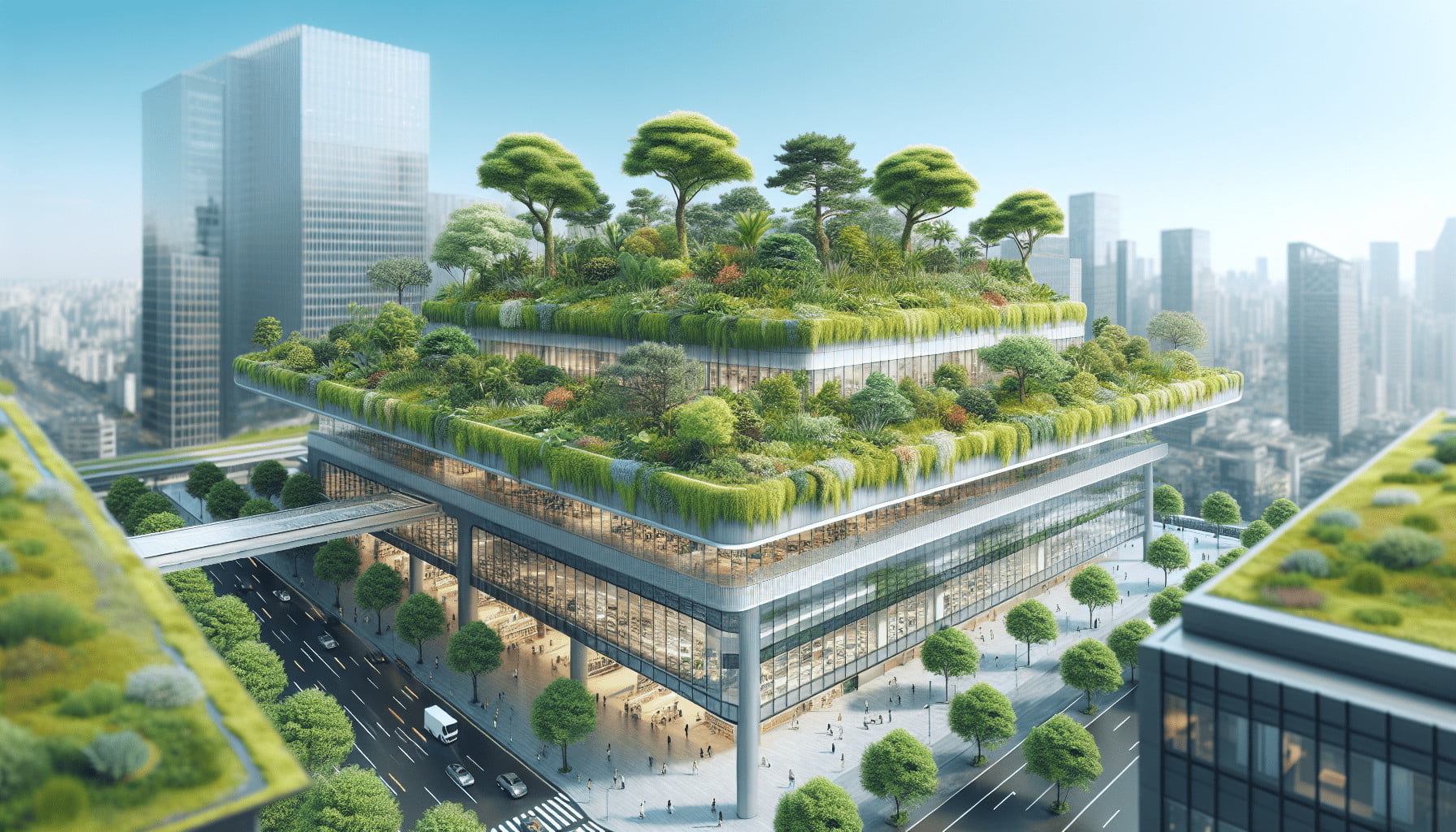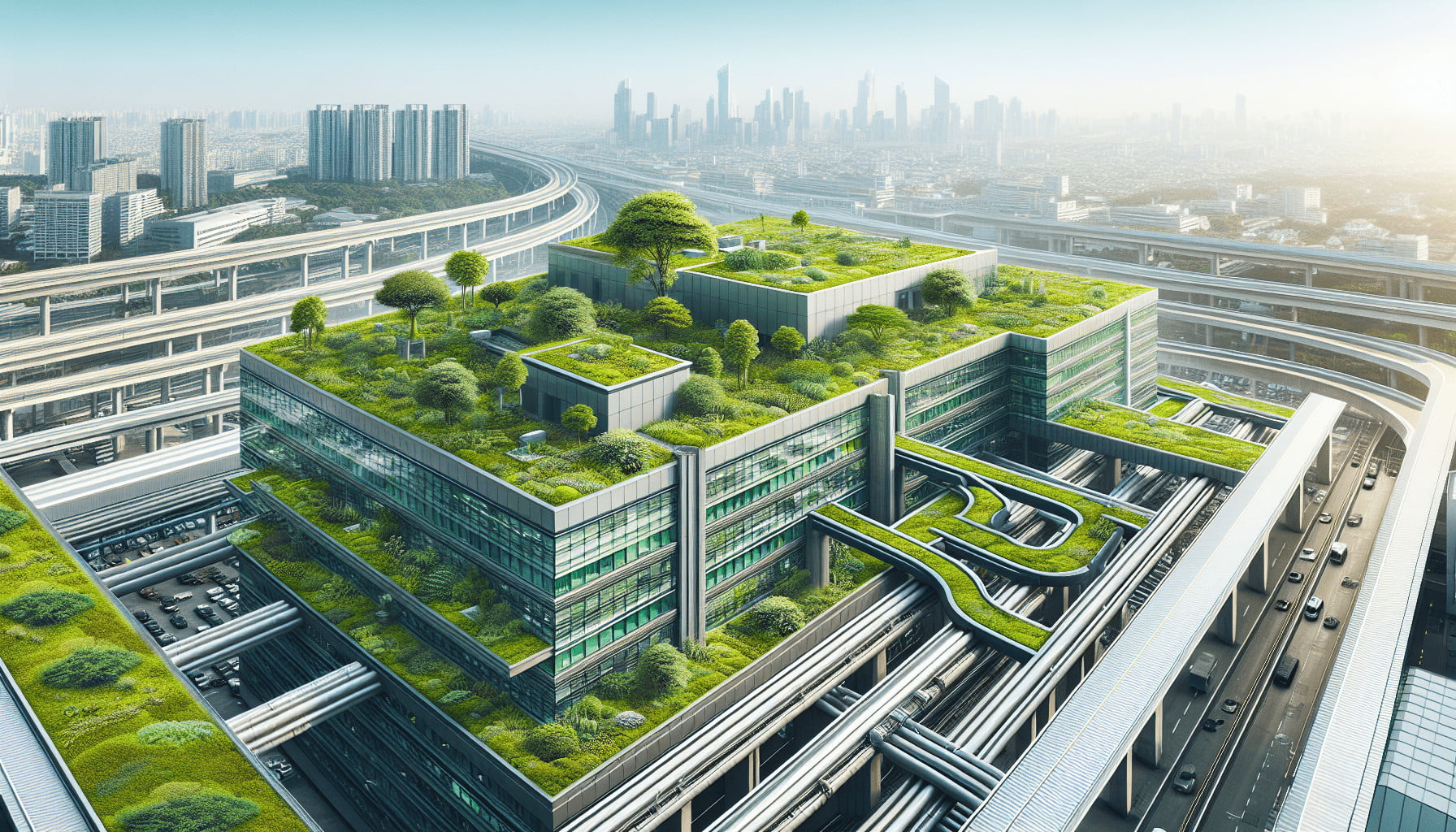Have you ever wondered how green roof systems can contribute to a quieter, more serene environment? With urban areas becoming noisier due to increased traffic, construction, and bustling city life, finding ways to reduce noise pollution is more crucial than ever. One innovative solution that’s gaining traction is the implementation of green roof systems. More than just an aesthetic enhancement, green roofs offer numerous practical benefits, one of which is significant noise reduction.

What is a Green Roof System?
A green roof system, also known as a living roof, is a roof that is partially or completely covered with vegetation and a growing medium, planted over a waterproofing membrane. It may also include additional layers such as a root barrier and drainage and irrigation systems. The primary components of a green roof include vegetation, growing medium, filter cloth, drainage, root barrier, thermal insulation, roof membrane, and structural support.
Essentially, it transforms an ordinary rooftop into an ecological asset that can improve air quality, manage stormwater, provide insulation, and, crucially, help in noise reduction.
Types of Green Roof Systems
Green roofs can be categorized into three main types based on their structure and function:
| Type | Structure | Function |
|---|---|---|
| Extensive Green Roof | Light-weight | Low maintenance, shallow substrate layer, typically covered with sedum, grass, moss. It’s suitable for roofs that cannot support much extra weight. |
| Intensive Green Roof | Heavy-weight | High maintenance, deep substrate layer, can support a wide variety of plants including shrubs and trees. Similar to a traditional garden or park in function. |
| Semi-Intensive Green Roof | Medium weight | Combination of both extensive and intensive features. Can support a wider variety of plant species than extensive roofs but requires more maintenance. |
These different types of green roofs can provide unique benefits based on their structure and the type of vegetation used.
How Green Roofs Help with Noise Reduction
Reducing noise pollution is one of the undervalued yet crucial benefits of green roof systems. This feature makes green roofs an attractive option for buildings near airports, train stations, busy streets, or industrial areas.
Noise Absorption and Isolation
Green roof systems can absorb and isolate noise, effectively reducing the amount of sound that penetrates the building. The layers of soil, plants, and other materials work together to block and absorb sound waves, creating a barrier that reduces noise pollution.
Here are the primary ways green roofs help in noise reduction:
- Absorption: The vegetation and soil absorb sound waves, which is particularly effective for high-frequency noises.
- Barrier Effect: The dense layers in a green roof act as a physical barrier, preventing noise from penetrating the building. This is especially useful against lower frequency sounds.
- Reflection: Some of the noise is reflected back into the atmosphere from the green roof surface.
Acoustic Performance
Studies have indicated that green roofs can reduce noise levels by as much as 40-50 decibels. The efficiency of noise reduction can depend on various factors such as the type of vegetation, the depth of the growing medium, and the overall design of the green roof.
Consider the following comparative figures to understand better how green roofs stack up against traditional roofs in terms of noise reduction:
| Green Roof Feature | Noise Reduction Efficiency (Decibels) |
|---|---|
| Extensive Green Roof | Reduces up to 40 decibels |
| Intensive Green Roof | Reduces up to 50 decibels |
These figures underline the substantial impact that green roofs can have on enhancing the acoustic environment of urban areas.
Benefits Beyond Noise Reduction
While noise reduction is a significant advantage, green roofs offer a multitude of other benefits that make them an excellent choice for urban development.
Environmental Benefits
- Air Quality Improvement: Green roofs contribute to cleaner air by absorbing pollutants and releasing oxygen.
- Stormwater Management: They can absorb up to 75% of rainfall, reducing the burden on sewage systems and the risk of flooding.
- Biodiversity: Green roofs can create habitats for various plant and animal species, supporting urban biodiversity.
Economic Benefits
- Energy Efficiency: Green roofs provide excellent insulation, leading to reduced heating and cooling costs.
- Extended Roof Lifespan: By protecting the roof membrane from UV radiation and harsh weather conditions, green roofs can extend the overall lifespan of the roof.
- Property Value: Installing a green roof can increase the market value of the property by enhancing its aesthetic appeal and sustainability credentials.
Social Benefits
- Aesthetic and Psychological Value: Green roofs can transform urban landscapes, making them more aesthetically pleasing and providing spaces for relaxation and recreation.
- Regulation Compliance: Many cities are offering incentives or requiring green roofs in new constructions as a part of sustainability initiatives.
Challenges and Considerations
Despite their numerous benefits, there are some challenges and considerations to keep in mind when implementing a green roof system.
Structural Requirements
One of the main challenges is ensuring that the building structure can support the additional weight of a green roof. Extensive green roofs are lighter and generally more suitable for retrofitting on existing buildings, while intensive green roofs require robust structural support due to their heavier weight.
Maintenance
Green roofs require ongoing maintenance to ensure the health of the vegetation and the overall function of the system. This can include watering, weeding, fertilizing, and general upkeep.
Cost
The initial cost of installing a green roof can be higher than that of a traditional roof. However, when you take into account the extended lifespan of the roof and the savings in energy costs, the investment can be justified over the long term.
Climate Suitability
The choice of plants and the design of the green roof need to be adapted to the local climate to ensure the sustainability and effectiveness of the system.

Case Studies and Real-World Examples
To better understand the practical implementation and benefits of green roofs, let’s look at some real-world examples.
Vancouver Convention Centre
The Vancouver Convention Centre is renowned for its 6-acre living roof, one of the largest in Canada. This green roof plays a crucial role in reducing noise pollution from the bustling city below and the nearby seaplane terminal. It also helps in stormwater management and provides habitat for a variety of plants and aquatic species.
The Barclays Center, Brooklyn
Another prime example is the Barclays Center in Brooklyn, New York. The complicated urban environment around the Center generates substantial noise. The intensive green roof installed here significantly lowers the noise levels inside the arena. Besides noise reduction, it also contributes to energy efficiency and the aesthetic of the area.
Chicago’s City Hall
Chicago’s City Hall, a pioneer of green roof systems in the United States, features a rooftop garden designed to reduce urban heat island effect and manage stormwater. Studies have shown that this green roof also effectively lowers noise pollution levels, making the building quieter and more energy-efficient.
Future of Green Roof Systems
As cities continue to grow and the demand for sustainable buildings increases, the future of green roof systems looks promising. Advances in technology and design are making green roofs more efficient, adaptable, and easier to maintain.
Technological Advancements
- Hydroponic Systems: Integration of hydroponic systems can make green roofs lighter and more adaptable to various environments.
- Smart Irrigation Systems: Automated irrigation systems that use sensors to monitor soil moisture and weather conditions can reduce water usage and maintenance requirements.
- Advanced Insulation Materials: New materials that enhance the insulation properties of green roofs can further reduce energy costs.
Policy and Incentives
Governments and municipalities are increasingly recognizing the benefits of green roofs and are incorporating them into their urban planning strategies. Incentives such as tax breaks, grants, and regulatory requirements are encouraging more building owners to adopt green roof systems.
Research and Development
Ongoing research is focused on improving the efficiency and sustainability of green roofs. Studies are exploring new plant species, soil compositions, and structural designs to enhance the performance of green roofs in noise reduction and other areas.
Conclusion
Green roof systems offer a myriad of benefits, with noise reduction being one of the standout advantages. By absorbing, isolating, and reflecting sound waves, green roofs can significantly reduce noise pollution, creating quieter and more serene urban environments. Moreover, the environmental, economic, and social benefits of green roofs make them an invaluable asset for sustainable urban development.
So, the next time you find yourself in a noisy city, look up—you might just find a green oasis above, working silently to make your environment a better place. And who knows? Perhaps green roofs will become a standard feature in all urban landscapes, contributing to the overall well-being of city dwellers everywhere.
